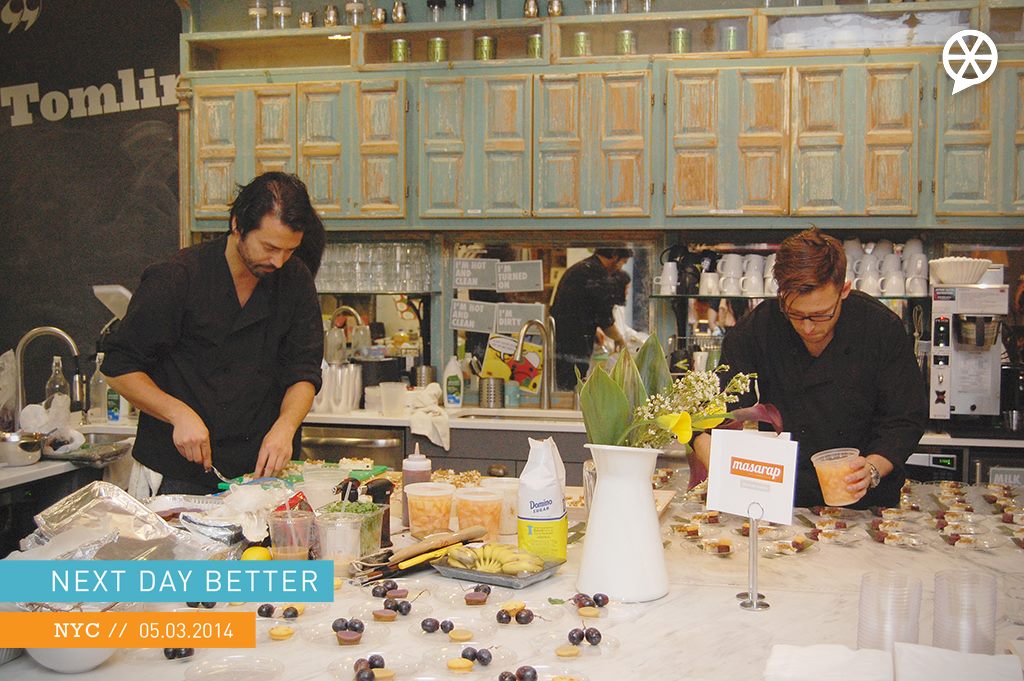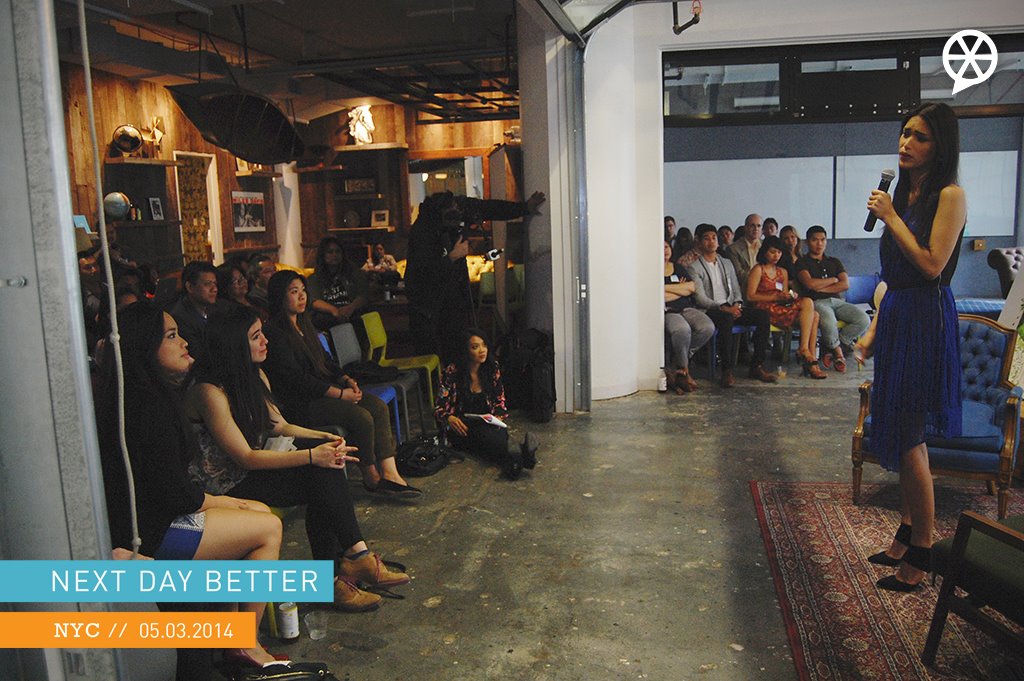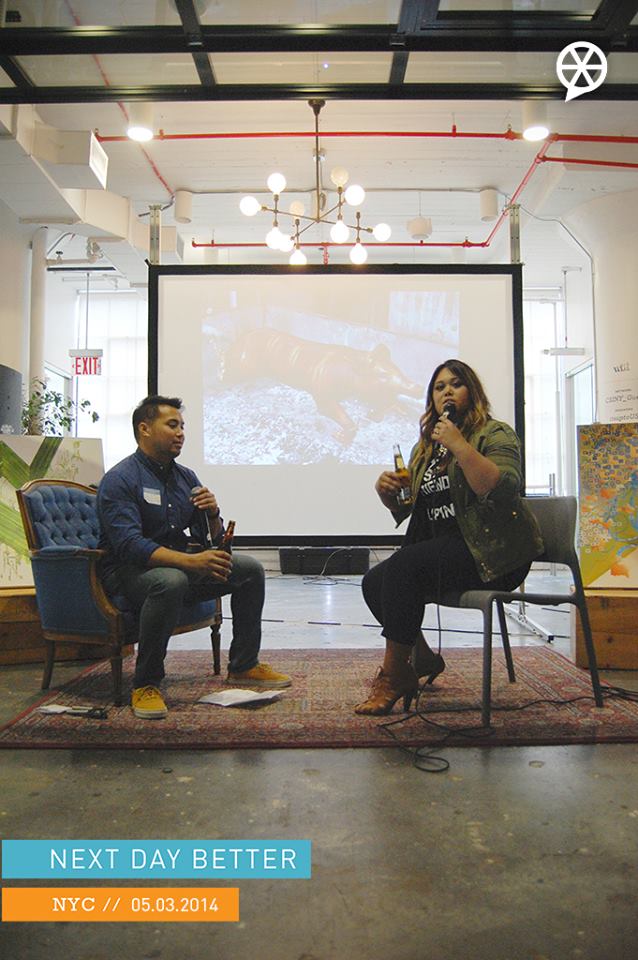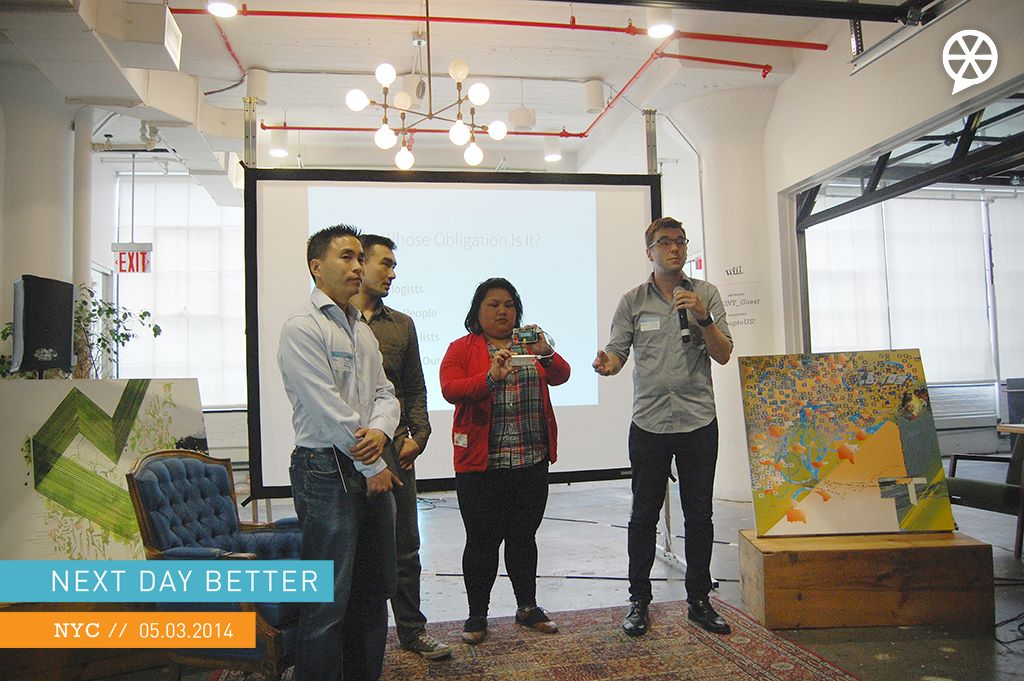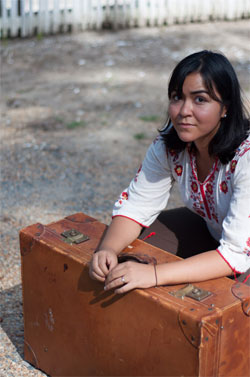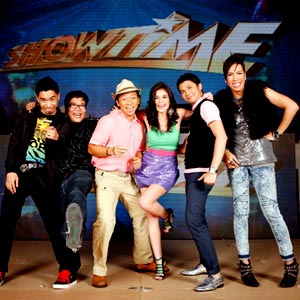When I first walked into the room for NextDayBetter’s NYC event last Saturday, May 3rd, a single word popped into my mind: snazzy. Held inside the Center for Social Innovation, the space invited attendees in with pulsating music, coconut sake cocktails, and a big blue kitchen with a sea of Pilipino food samples. The intimate and casual yet energized vibe of the room said, “Hey there, let’s get together over good eats and drinks and change the world.”

The event kicked off with a tableside chat with featured chefs from Bibingka-esk and Masarap Supper Club. The chefs shared not only their culinary concoctions but also their stories of how they began pursuing their love of making Pilipino food professionally and intend to play a role in its evolution.
“I want Bibingka to be the next chocolate chip,” declared Binbingka-esk creator Eileen Formanes.
NextDayBetter Co-Founder Ryan Letada then took the stage and posed to the room:
“What can we do to collaborate and exchange ideas to make the next day better?” He explained that the presenting speakers were asked to share their stories because they were all individuals who took risks and made breakthroughs for themselves and their communities.
Below are short summaries of their inspiring talks:
Geena Rocero, transgender model and founder of Gender Proud, discussed the need for political recognition of transgender identity and the right to choose one’s own gender marker on identification documents. When one’s gender marker doesn’t match how a person feels on the inside or looks on the outside, it turns regular activities like applying for a job, voting, or even opening a bank account into highly stressful and embarrassing situations.
“Imagine constantly divulging the most personal thing about yourself,” she proposed.
Teach for the Philippines Fellow Leah Villanueva spoke about how the dream of making a better Philippines is an attainable one, but it can’t be achieved without improving public education. Currently schools in the Philippines suffer from high dropout rates, overworked teachers, and frequent electricity outages among many other challenges.
“These kids deserve so much more, our country deserves so much more,” Leah noted.
Restaurateur Nicole Ponseca chatted about how Maharlika and Jeepney were the first Pilipino fusion restaurants to truly own Pilipino food without apology, duck fetuses and all. Rather than hiding the less mainstream aspects of Pilipino cuisine, Maharlika held a contest challenging participants to eat as much balut as possible in five minutes.
“If you’re embarrassed about anything, whatever it is, you got to turn it around and make it a sense of pride,” Nicole encouraged.
Although the founder of Rappler couldn’t be there in person, Maria Ressa recorded a video in which she introduced Project Agos, a real-time disaster reporting platform that harnesses mapping, social media, and crowd sourcing so that relief responders “can visually identify areas in need of help or relief and what exactly is needed.”
Matt Grasser and Team LDLN held a tech demo in which they showed how the device and mobile app they designed could be used to create makeshift Wi-Fi networks in the event of an emergency, such as Typhoon Haiyan. Through these low-cost devices, people on the ground would be able to communicate with relief services even if power sources are down.
Airforce veteran Lourdes Tiglao shared her experiences as a member of Team Rubicon, a disaster response organization comprised of American military veterans who want to continue utilizing their skills after returning home. Team Rubicon was deployed in Tacloban after Typhoon Haiyan hit and acted as first medical response for many victims. Tiglao met several Pilipino veterans who were enthusiastic about the idea of creating a Team Rubicon in the Philippines.
Photo credits: www.facebook.com/NextDayBetter

